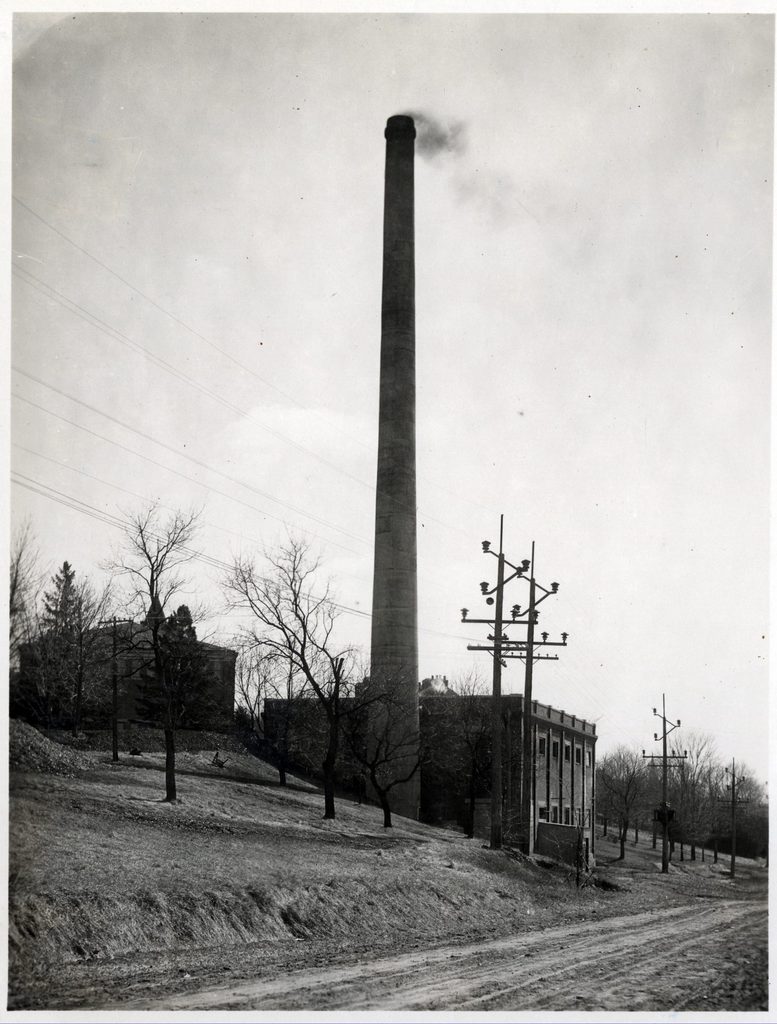Carleton College celebrates the End of Steam as carbon footprint plunges
After 111 years of continuous steam plant operation, Carleton College will complete its campus-wide transition to geothermal energy this summer.

On Friday, May 21, Carleton College’s last full-time steam plant operator will “blow off steam” for the very last time. This date marks a significant milestone for the College as it completes a five-year transition to campus-wide hot water heating and a geothermal heat pump system. Since 2008, the campus has reduced its carbon footprint by more than 50%, making significant progress on its pledge to be carbon neutral by 2050.
“I’m excited and proud of how our bold conversion to low-temp hot water energy generation on campus is considerably reducing Carleton’s carbon footprint,” Carleton President Steve Poskanzer said. “I’m grateful to all those whose careful planning, creative thinking and hard work helped us achieve this new mode of operation. This is a significant part of fulfilling our responsibility to be wise environmental stewards.”
This last decade of progress has far exceeded the goals laid out in the College’s 2011 Climate Action Plan.

“With Minnesota’s harsh winters, we had been struggling to come up with sustainable ways to address our huge heating loads,” said Martha Larson, manager of Campus Energy and Sustainability. “We were facing some major capital expenses at the central plant when a similar project at Ball State University inspired us to explore the concept of a campus-scale geothermal system. That was the turning point when we began to see a clear path toward modernizing Carleton’s central plant and significantly driving down our carbon footprint.”
By summer 2020, after one year of operation with only half of the system online, Carleton’s natural gas consumption decreased by over 40%, and total campus energy use (gas and electricity) decreased by nearly 30%. These massive energy savings come from the heat pump’s ability to capture heat extracted from the chilled water system and deposit it directly into the heating water system. Excess heat is sent to three, 520-foot deep geothermal bore fields which act like a giant thermal battery. This ability to capture and repurpose existing heat on campus reduces the need to create new energy at the central plant.
When operating at peak efficiency — primarily during fall and spring when heating and cooling loads are balanced — the new system can generate more than six units of energy output for every one unit of fuel input. In fall of 2021, after completing the project by connecting the last seven buildings to the new system, Carleton’s geothermal system will serve 70% of Carleton’s annual heating and cooling needs. During peak heating and cooling seasons, it will be supplemented by high-efficiency condensing boilers and Carleton’s existing electric chillers.
This technological shift also marks a move toward electrification as more electricity is required to power the heat pump and move hot and chilled water throughout the 2 million square-foot campus. But thanks to Carleton’s two commercial-scale wind turbines and rapid decarbonization of the public electricity grid, the College believes this strategy will help meet its ambitious carbon reduction targets.
An “end of steam” celebration on May 21 will honor the legacy of Carleton’s steam plant history while also ushering in a new era of more sustainable energy production.
“As excited as we are in looking forward to the completion of the heating plant conversion, I am equally looking forward to celebrating the contributions of everyone over the past decades who maintained and operated the steam plant and provided the campus with safe and reliable heating,” said Steve Sphen, director of facilities and capital planning. “We owe all of them a big thank you for their hard work, commitment, and dedication to their jobs and the College.”
At the May 21 event, brief remarks will be followed by a dramatic display as boiler operators vent steam through the Facilities Building roof for the very last time. The event will be livestreamed, as the Carleton campus remains closed to the public.
“We’re really eager to complete the utility master plan work this fall,” Larson said. “The biggest question on our minds right now is, ‘What’s next?’”
Learn more about Carleton’s Utility Master Plan.